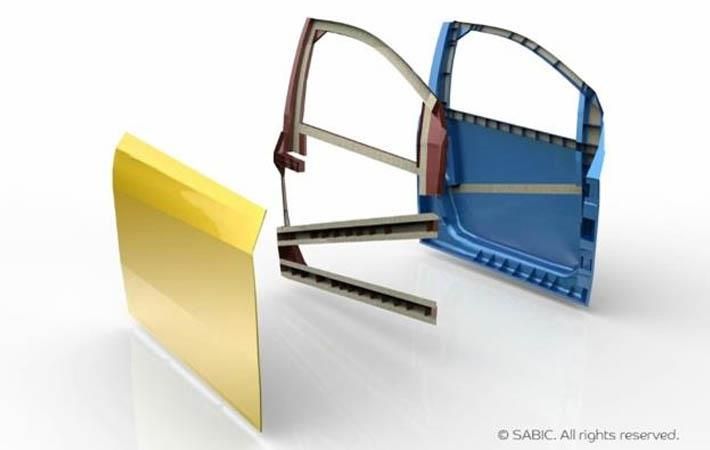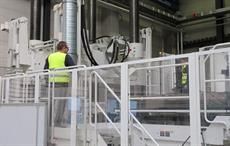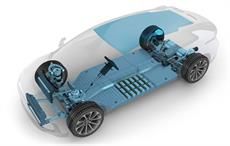Sabic, a leader in the chemical industry, showed the results of a recent lifecycle assessment of passenger car side doors using hybrid material solutions including laminates made with its continuous fibre-reinforced thermoplastic composite (CFRTC), the UDMAX GPP 45-70 tape, at the JEC World 2018, from March 6 to 8, 2018, in Paris, in stand L84, hall 5.
The material system aims to help improve compliance with stringent energy and emissions regulations. The externally certified, cradle-to-grave life cycle assessment (LCA) found that doors made with the glass fibre polypropylene-reinforced composites outperformed metal car doors in two key environmental categories: global warming potential and cumulative energy demand. In addition to weighing significantly less than steel, aluminium, and magnesium, the CFRTC parts deliver exceptional strength, corrosion resistance, and the ability to be produced in high volumes using injection moulding.Sabic, a leader in the chemical industry, showed the results of a recent lifecycle assessment of passenger car side doors using hybrid material solutions including laminates made with its continuous fibre-reinforced thermoplastic composite (CFRTC), the UDMAX GPP 45-70 tape, at the JEC World 2018, from March 6 to 8, 2018, in Paris, in stand L84, hall 5.#
The lifecycle assessment, performed in compliance with ISO 14040/44, compared a side door of a passenger car (a typical sedan) made with thermoplastic matrix composites comprising of UDMAX GPP 45-70 tape combined with an injection-moulded grade of glass-filled thermoplastic resin, to identical doors made of steel, aluminium and magnesium. Based on the design specifications, the UDMAX tapes were converted into a laminate and then overmoulded onto both sides of a substrate using Sabic’s STAMAX glass reinforced polypropylene product, creating a hybrid material system. Parameters for vehicle operation were based on three powertrains – internal combustion (no adaptation), plug-in hybrid, and electric – operating over a lifetime of 200,000 km using the New European Driving Cycle.
The results for the internal combustion powertrain showed that the thermoplastic composite doors achieved lower global warming potential than any of the three metal doors: 26 per cent lower than steel, 21 per cent lower than aluminium and 37 per cent lower than magnesium. These numbers were slightly different for the hybrid and electric powertrains.
For cumulative energy demand, the thermoplastic composite doors also achieved lower numbers than the metal doors: 10 per cent less than steel, 13 per cent less than aluminium, and 26 per cent less than magnesium for the internal combustion powertrain. Again, the results were slightly different for the hybrid and electric powertrains.
Nikhil Verghese, research fellow, technology & innovation at Sabic said, “This lifecycle assessment demonstrates the effectiveness of Sabic’s industry-leading thermoplastic composites-based solution offering in reducing carbon and energy footprints compared to metal. We encourage customers to consider this data when selecting materials for automotive parts.” (GK)
Fibre2Fashion News Desk – India


